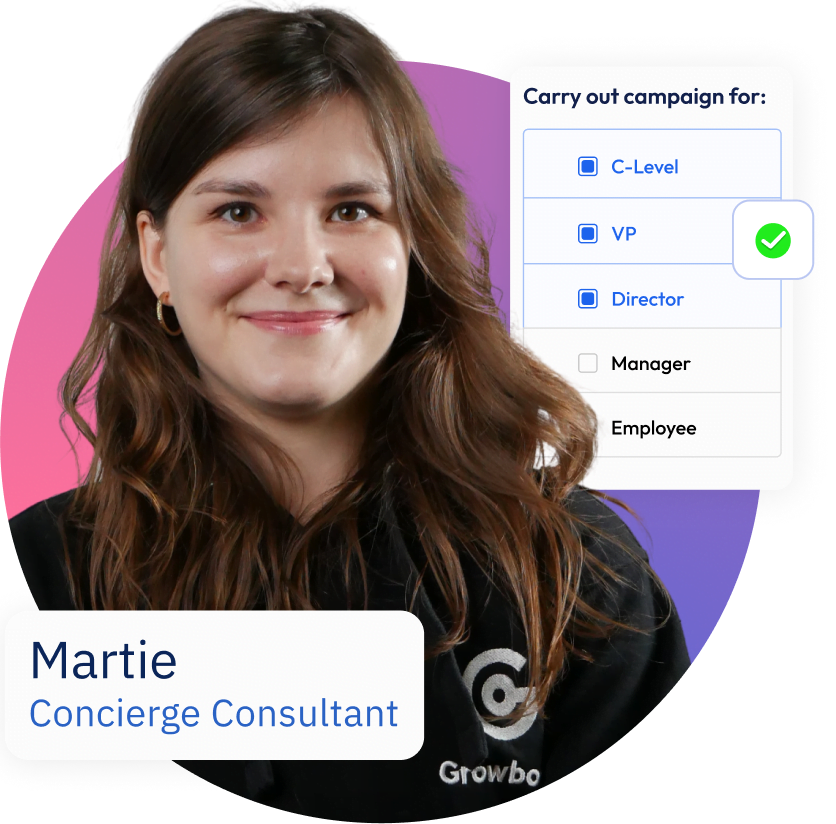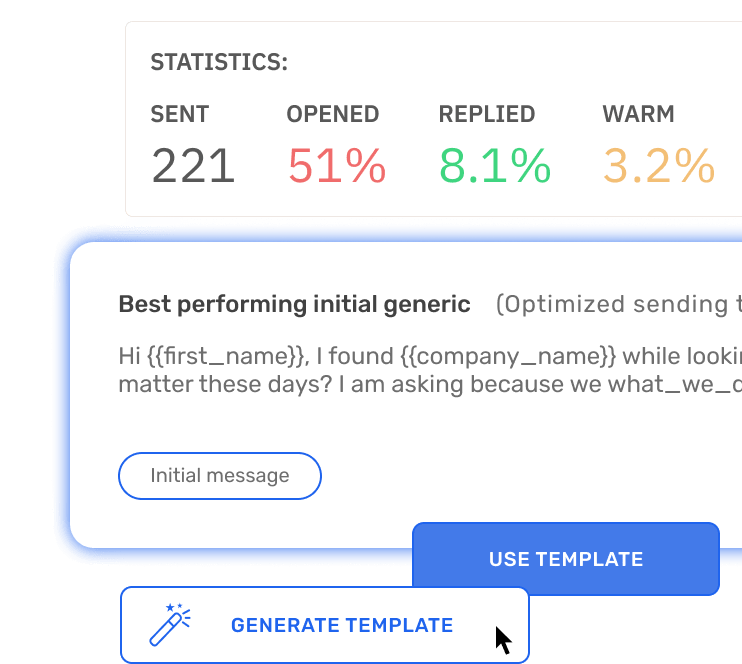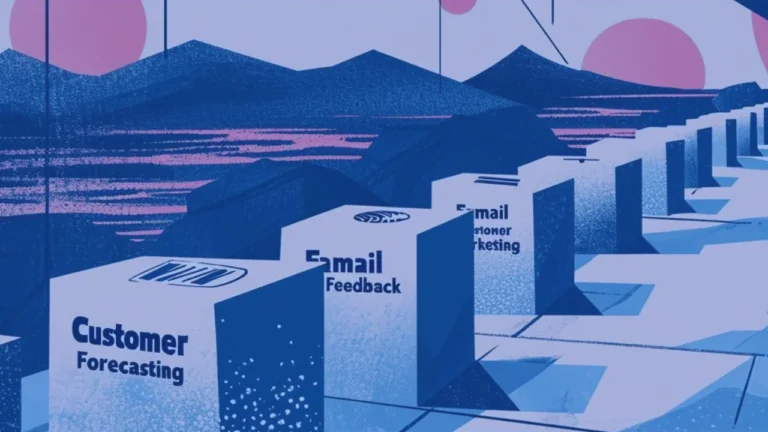Cold emailing remains a cornerstone of successful B2B outreach strategies.
However, as the digital landscape becomes increasingly crowded, the importance of personalization and precision in messaging has never been higher.
This is where segmentation strategies come into play, allowing businesses to tailor their communications and engage with prospects on a more individual level.
In this comprehensive guide, we’ll explore various segmentation strategies that can transform your cold emailing from a generic broadcast into a series of targeted, high-value touchpoints.
Whether you’re looking to increase open rates, enhance engagement, or drive up conversion rates, understanding and applying effective cold email segmentation is your critical first step.
TL;DR
- The digital landscape’s crowded nature highlights the necessity for personalized and precise messaging through segmentation to connect at an individual level.
- Email segmentation involves categorizing an email list into more focused groups based on specific criteria to send compelling, relevant messages.
- Benefits of email segmentation include higher open rates, better engagement, increased conversion rates, an enhanced sender reputation, and enriched customer insights.
- Effective email segmentation is grounded in a deep understanding of the target audience, with data collection through surveys, behavioral analysis, market research, and sales feedback.
- Segmentation enhances cold emailing by ensuring that a relevant and targeted message reaches the right person at the right time.
- Initial steps for starting with email segmentation involve data collection, identifying segmentation criteria, analyzing offerings, and using the right automation tools.
- Advanced segmentation strategies discussed include industry-specific, role-based, company size, geographic, behavioral, and engagement level segmentation, among others.
- The guide covers the merits of using advanced techniques like AI and predictive analytics for dynamic content personalization.
- Personalization, timing, and frequency are critical to the success of segmented emails, with strategic recommendations provided for each segment.
- Marketers should avoid pitfalls such as over-segmentation, under-segmentation, using outdated data, and ignoring legal and privacy concerns.
- Measuring success requires tracking key performance indicators and continuously optimizing the strategy.
- Segmentation is an ongoing process that adapts with the audience and marketplace, essential for maintaining campaign relevance and deepening prospect relationships.
- Implementing these segmentation strategies with Growbots can streamline your cold emailing process, leading to measurable results; start a free trial to experience the benefits firsthand.
Reach More with Less Effort
Connect with Potential Clients at scale
- AI message generator
- E-mail verification
- Multichannel sequences
- A/B testing
Understanding Email Segmentation
What exactly is email segmentation?
In essence, it’s the process of dividing your email list into smaller, more focused groups based on specific criteria.
The ultimate goal of segmentation in cold emailing is to send more personalized, and consequently more compelling and relevant, messages to potential customers
| Benefits of Email Segmentation | Details |
| Increased Open Rates | Emails that resonate with a reader’s specific needs and interests are more likely to be opened. |
| Better Engagement | Segmented emails can provide content that is more engaging and actionable to the audience. |
| Higher Conversion Rates | When a message aligns with a prospect’s stage in the buying journey, they’re more likely to convert. |
| Improved Sender Reputation | With fewer irrelevant emails sent out, the risk of being marked as spam decreases. |
| Enhanced Customer Insights | The responses and interactions within each segment can yield valuable data about customer preferences. |
By implementing email segmentation, marketers and sales professionals can substantially improve their outreach efficiency and effectiveness, ultimately driving better business results.
The Foundation of Effective Segmentation
Segmentation strategies start with a deep understanding of the target audience.
It involves gathering and analyzing information to identify patterns that can inform how the audience is divided.
Accurate and relevant data are the cornerstones of this process, without which even the most sophisticated strategies may fail.
Data Collection for Segmentation
| Method | Description | Benefits |
| Surveys | Collecting data directly from the audience | High relevance and specificity |
| Behavioral Analysis | Using analytics tools to monitor user actions | Real-time, actionable insights |
| Market Research | Gathering information about market trends | Understanding broader audience dynamics |
| Sales Feedback | Insights from frontline sales experiences | Practical, firsthand customer perspectives |
This table outlines some common methods for collecting data that can be used to define segments.
By utilizing a combination of these approaches, businesses can create a comprehensive data pool to draw their segmentation strategies from.
The Case for Segmentation in Cold Emailing
Segmentation goes beyond mere efficiency—it’s about delivering the right message, to the right person, at the right time.
With exact targeting, sales messages can become irresistibly relevant to the recipient.
- Cold emails without segmentation often struggle to demonstrate their relevance, getting lost in a sea of generic inbound messages.
- On the other hand, segmented campaigns report a significant improvement in click-through rates, providing a solid case for adopting segmentation in your strategy.
For this reason, incorporating segmentation in cold emailing is not just a best practice—it’s a competitive edge that can set your outreach apart in a highly saturated marketplace.
Read also: How to write cold emails to investors
Getting Started with Email Segmentation
Embarking on email segmentation can seem daunting at first. Below we share a list of initial steps that can guide your segmentation efforts:
- Collect Data: Gather comprehensive data on your leads, including demographic, firmographic, technographic, and psychographic information.
- Identify Segmentation Criteria: Decide on the criteria that will be most effective for your product and audience. This might include industry, company size, job title, or behavior.
- Analyze Your Offerings: Understand which aspects of your offerings align best with various segments of your audience.
- Use the Right Tools: Implement tools that can automate the segmentation process based on the criteria you’ve established.
By following these steps, you’re laying the groundwork for a segmentation strategy that can significantly elevate the performance of your cold emailing campaigns.
Segmentation Strategies
When it comes to segmentation strategies, there’s a lot of approaches you can take. Let’s delve into some of the most effective ones:
Industry-Specific Segmentation
Different industries have unique challenges and pain points.
Segmenting your email list by industry allows you to speak directly to these points, thus enhancing the relevance and impact of your message.
Examples include:
| Industry | Challenges | Solutions |
| Finance | Compliance and security concerns | Feature emphasis on security |
| Healthcare | Patient data management | Highlight data handling capabilities |
| Retail | Customer retention | Showcase loyalty program integrations |
Understanding the nuances of each industry and customizing your approach is essential in capturing the attention of busy professionals.
Role or Position-Based Segmentation
The decision-makers within a company all have distinct priorities.
Crafting your message to cater to the specific role or position of the recipient can drive greater engagement and response rates.
- CEOs might be interested in strategic overviews and ROI.
- Marketers could respond well to discussions on campaign analytics and reach.
- IT professionals may engage with messages about innovation and technology integration.
Company Size Segmentation
Company size can significantly influence needs, priorities, and decision-making processes.
Small startups operate differently from large multinational corporations, and your emails should reflect this disparity.
| Company Size | Characteristics | Email Approach |
| Small Business | Personal touch, relationships | Focus on direct benefits and personalized service |
| Enterprise | Formal procedures, multiple stakeholders | Stress scalability, comprehensive support |
Tailoring your messaging according to the size of the company ensures that your proposal resonates more with the recipient’s everyday business reality.
Geographic Segmentation
Geography deeply affects business operations and can play a critical role in forming effective segmentation strategies.
Localized content can significantly boost the relevance of your cold emails.
- Time Zones: Schedule emails to arrive during the recipient’s business hours.
- Cultural Nuances: Customize content to align with local business etiquette and cultural practices.
- Language Preferences: When applicable, translating your message can make a world of difference.
Careful consideration of geographic factors can enhance the effectiveness of your international outreach efforts, creating a more personalized experience for recipients.
Behavioral Segmentation
Behavioral segmentation takes into account how the customer interacts with a brand, what purchases they make, and how often they engage.
By understanding these behavioral patterns, companies can customize their cold emails to reflect the recipient’s interests and past behavior, significantly improving the relevance of the message.
Let’s have a look at examples:
| Actions | Metrics | Utility |
| Purchase History | Frequency, recency, monetary value | Predicting future purchases |
| Engagement | Email opens, clicks | Gauging interest levels |
| Customer Feedback | Survey responses, reviews | Direct insights into preferences |
| Website Activity | Pages visited, average time spent on the website, conversions | Segment based on pages visited or content downloaded from your website |
Innovative use of these metrics enables businesses to fine-tune their email campaigns to match the customer’s anticipated needs and wants.
By focusing on behavioral cues, you can craft messaging that aligns with the prospect’s current engagement with your brand, increasing the potential for conversion.
Engagement Level Segmentation
How involved a prospect is with your brand can inform the type of messaging they receive.
Some might need more nurturing, while others may be on the verge of making a purchase decision.
| Engagement Level | Email Content |
| New Leads | Educational information |
| Engaged Prospects | Case studies, testimonials |
| Active Opportunities | Special offers, product demos |
Understanding the different stages of engagement helps in sending the right message at the most opportune time, potentially speeding up the sales cycle.
Purchase History Segmentation
Analyzing a prospect’s purchase history provides valuable insight into their preferences and potential needs, allowing for strategic upselling and cross-selling opportunities.
- Previous Purchases: Tailor recommendations based on past buying habits.
- Purchase Frequency: Identify patterns to predict future purchases.
- Spending Habits: Customize offers based on the price sensitivity of customers.
A strategic approach to purchase history segmentation can significantly increase the lifetime value of your customers by ensuring that they receive offers and recommendations that are particularly relevant to them.
Content Interest Segmentation
Segmenting your audience based on the content they have shown interest in allows you to deliver more of what they like, thereby nurturing their journey down the sales funnel.
- Blog Readers: Send more in-depth articles on similar topics.
- Webinar Attendees: Offer additional resources or follow-up webinars.
- Resource Downloaders: Provide related case studies or whitepapers.
Through careful tracking and analysis of content engagement, you can ensure that your audience receives material that is both useful and engaging, fostering a deeper relationship with your brand.
Event-Based Segmentation
Events such as webinars, conferences, and product launches provide a unique opportunity to segment and target prospects based on their participation and interest.
- Pre-Event: Highlight what attendees can expect and build excitement.
- Post-Event: Follow up with materials, key takeaways, or exclusive offers for participants.
Segmenting based on event participation enables more precise follow-up strategies that keep the conversation going and potentially move prospects closer to a sale.
Lead Source Segmentation
The source of your leads can be a strong indicator of their interests and needs. Emails should be crafted to reflect the initial context in which the prospect came into contact with your brand.
- Social Media: Highlight community and engagement aspects.
- Web Searches: Stress the solution to the problem they were searching for.
- Referrals: Prioritize trust elements and validation.
Recognizing where your leads originate allows you to craft messaging that continues the narrative of that initial encounter, encouraging further interactions and interest.
leave no lead unexplored
Every potential client within reach
- 180m+ contacts
- CRM integrations
- 23 Prospect filters
- 15 Company filters
Advanced Segmentation Techniques
For those ready to take their email segmentation to the next level, advanced techniques involving artificial intelligence (AI) and predictive analytics can offer substantial improvements:
- Dynamic Content: Tailoring email content in real-time based on recipient behavior.
- Predictive Analytics: Forecasting future behaviors and tailoring communication accordingly.
- AI-powered Optimization: Utilizing machine learning to optimize timing, content relevance, and email personalization.
By incorporating these advanced techniques, organizations can better anticipate the needs and responses of their audience segments, leading to even more successful email campaigns.
Crafting Targeted Messages for Each Segment
Personalization is the keystone of any segmentation strategy, transforming generic cold emails into messages that feel bespoke to the receiver.
Ensuring your content resonates deeply with each segment involves:
- Understanding the recipient’s industry language and key pain points.
- Incorporating personal details, like name and company, naturally within the email.
- Using the data from your segmentation to inform the message, tone, and offerings presented.
Creating personalized content involves presenting solutions and ideas that are highly relevant to the specific needs and interests of each segment.
Including Compelling Calls to Action (CTAs)
The call to action is a critical component of any cold email. It’s what guides the recipient toward the next step in the sales process. Let’s have a look at what defines effective CTAs:
| Trait | Description | Impact on Recipient |
| Clarity | Clear, straightforward CTAs | Reduces confusion, improves response rate |
| Urgency | Time-sensitive language | Encourages prompt action |
| Relevance | CTAs that match the recipient’s stage in the buying process | Increases the likelihood of engagement |
As you can see, a good CTA is not just a matter of what is said, but who it is said to. Segmenting recipients therefore allows for the inclusion of CTAs that are more likely to resonate and result in the desired action.
Timing and Frequency of Segmented Emails
Equally crucial to email content is the timing and frequency of your segmented email campaigns. Below we share a basic table to help you determine when and how often to send your cold emails:
| Segment | Suggested Timing | Frequency |
| Decision-makers | Mid-week, early morning | Bi-weekly |
| Technical roles | End of the week, later in the day | Monthly |
| Marketing professionals | Early in the week, after business hours | Weekly |
Always respect your audience’s time and preferences by being mindful of when they are most receptive to professional correspondence, and avoid overcommunication to maintain email list health.
A/B Testing and Continuous Optimization
In any cold emailing strategy, A/B testing serves as a critical method for improving performance over time.
It involves comparing two versions of an email to determine which performs better in terms of opens, clicks, and conversions.
When it comes to segmentation, this testing can uncover which aspects resonate most with each segment. You can find ideas for A/B testing in the table below:
| Element | A/B Testing Application | Measurement of Success |
| Subject Lines | Testing different subject lines to increase open rates | Open Rate Percentage |
| Email Content | Comparing personalization levels for engagement | Click-through Rate (CTR) |
| CTA Placement | Positioning CTAs at various points to prompt action | Conversion Rate |
By continuously optimizing and tailoring emails through A/B testing, companies can refine their segmentation strategies to achieve better results.
Leveraging Technology and Tools
Technology plays a significant role in the execution of sophisticated segmentation strategies.
Various tools exist that enable marketers to segment their audience effectively, automate email campaigns, and analyze the results.
This technology stack makes segmentation strategies both accessible and scalable for businesses of all sizes.
Essential segmentation and automation tools include:
- CRM Software: Helps you centralize customer data and manage segmentation.
- Email Automation Platforms like Growbots: Using outreach automation tools you can deliver personalized emails at scale.
- Analytics Tools: They enable monitoring key metrics to gauge the effectiveness of segmentation.
By leveraging such tools, companies can ensure their segmentation strategies are efficiently executed and continuously improved upon.
no prior experience & time required
Find your winning outbound formula with Concierge
- 95% activities on our behalf
- Avoid in-house SDR hire
- Learn & Take over anytime
- Numerous A/B tests
Common Pitfalls to Avoid in Cold Email Segmentation
While segmentation has profound advantages, there are common pitfalls that marketers must be aware of.
Avoiding these mistakes is crucial for the success of any segmentation strategy and the overall effectiveness of cold emailing campaigns:
| Pitfall | Description | Prevention Strategy |
| Over-Segmentation | Segmenting to a degree that is too granular, causing complexity | Keep segments broad enough to be manageable but targeted |
| Under-Segmentation | Not segmenting enough, leading to generic messaging | Utilize available data to create meaningful distinctions |
| Relying on Outdated Data | Using data that no longer represents current realities | Regularly update and validate segmentation data sources |
| Segment Evolution |
|
|
| Cross-Departmental Alignment |
|
|
| Legal and Privacy Concerns | Navigating the complex landscape of privacy laws like GDPR or CCPA can be overwhelming when collecting and using data | Work closely with legal teams to understand obligations and rights. Implement robust data management and protection policies |
| Resource Allocation |
|
|
Acknowledging and actively avoiding these missteps will pave the way for segmentation strategies that are both impactful and manageable.
Measuring Success and Optimization
To know if your segmentation strategies are effective, track, measure, and optimize. Below is a breakdown of key performance indicators and methods to fine-tune your segmentation:
| KPIs | Optimization Method |
| Open rates | A/B test subject lines targeting segments |
| Click rates | Modify call-to-action placement and wording |
| Conversion rates | Test different value propositions |
Regularly analyze performance data, tweak, and test different parameters to continuously enhance the effectiveness of your cold emailing campaigns.
We dive into the details of effective cold email analytics in another article–make sure to check it out.
Conclusion
In a world where inboxes are constantly overflowing, segmentation stands out as a powerful strategy to cut through the noise and connect with your prospective customers on a deeper level.
By following the strategies outlined in this guide, not only can you enhance the relevance and impact of your cold emailing campaigns but also build more meaningful relationships with your prospects.
Remember, segmentation is not a one-time setup; it is a dynamic process that evolves with your audience and marketplace.
Stay attentive, continue to optimize, and watch as your cold emailing efforts yield better and brighter results.
FAQ
What is the importance of segmentation in cold emailing?
Segmentation is crucial in cold emailing as it allows for personalized communication tailored to the specific needs and interests of different groups within a target audience. By doing so, businesses can improve the relevance of their messages, increase engagement rates, and ultimately enhance the effectiveness of their cold outreach efforts.
How does behavioral segmentation differ from demographic segmentation?
Behavioral segmentation focuses on the actions and behaviors of customers, such as their purchasing habits, interactions with a brand, and overall engagement. In contrast, demographic segmentation categorizes individuals based on statistical traits like age, gender, income level, education, and occupation. Both provide unique insights but are used for different purposes in tailoring messaging.
Can you A/B test a call to action in cold emails?
Yes, A/B testing a call to action (CTA) in cold emails is a common practice. By creating different versions of CTAs and measuring their performance in terms of click-through rates and conversions, businesses can identify which CTAs resonate more with their audience and optimize their emails accordingly.
Why is A/B testing essential for continuous optimization?
A/B testing is essential for continuous optimization as it provides empirical data on what aspects of an email perform best. This information can then be used to refine email content, design, timing, and segmentation strategies, leading to improved performance in open rates, click-through rates, and conversions over time.
How frequently should email data be updated for effective segmentation?
Email data should be updated regularly to ensure segmentation remains relevant and effective. The frequency of updates can depend on factors such as industry pace, changes in customer behavior, or market trends. However, a general rule of thumb is to review and refine data at least quarterly.
What technology tools are recommended for implementing segmentation strategies?
Essential tools for implementing segmentation strategies include CRM software for data management, email automation platforms for delivering personalized emails at scale, and analytics tools for monitoring campaign performance. These tools help companies execute and measure the effectiveness of their segmentation in an efficient and scalable manner.

































